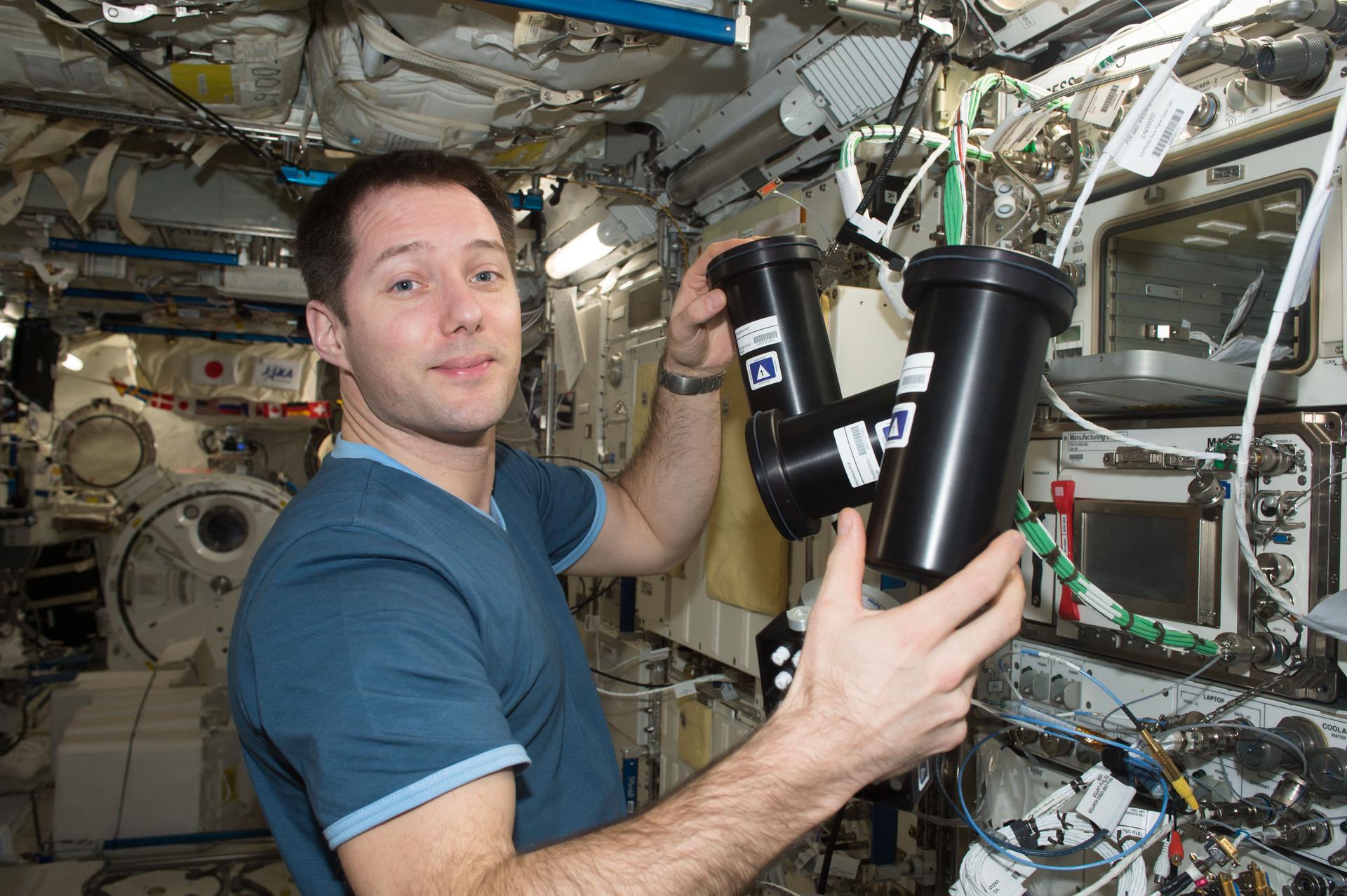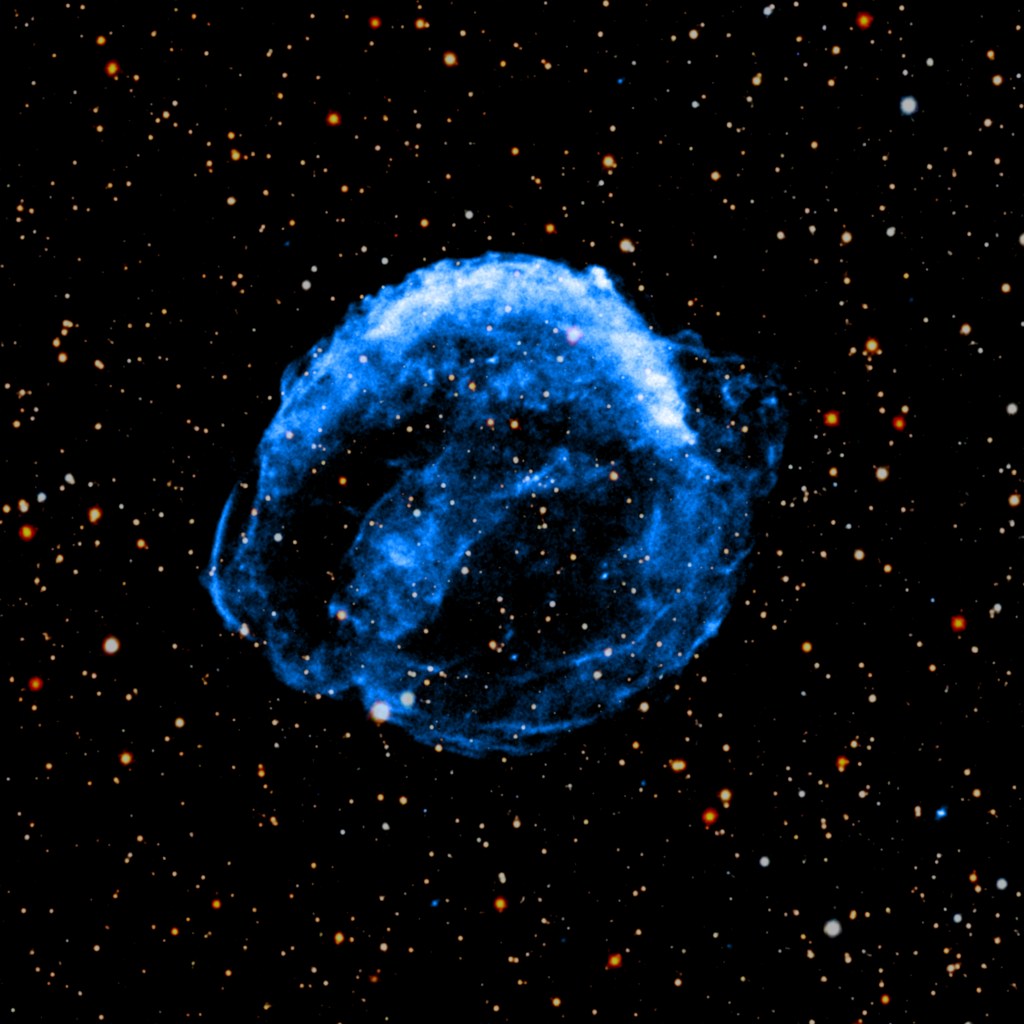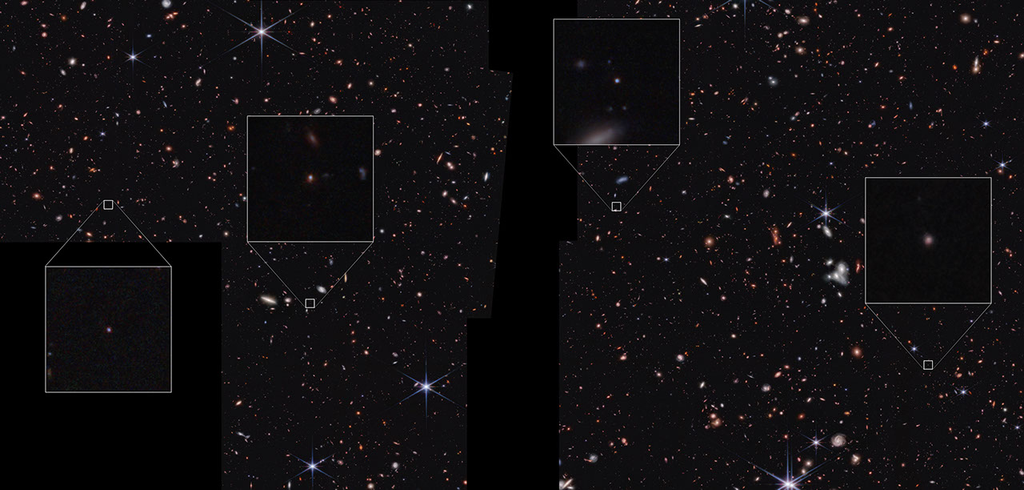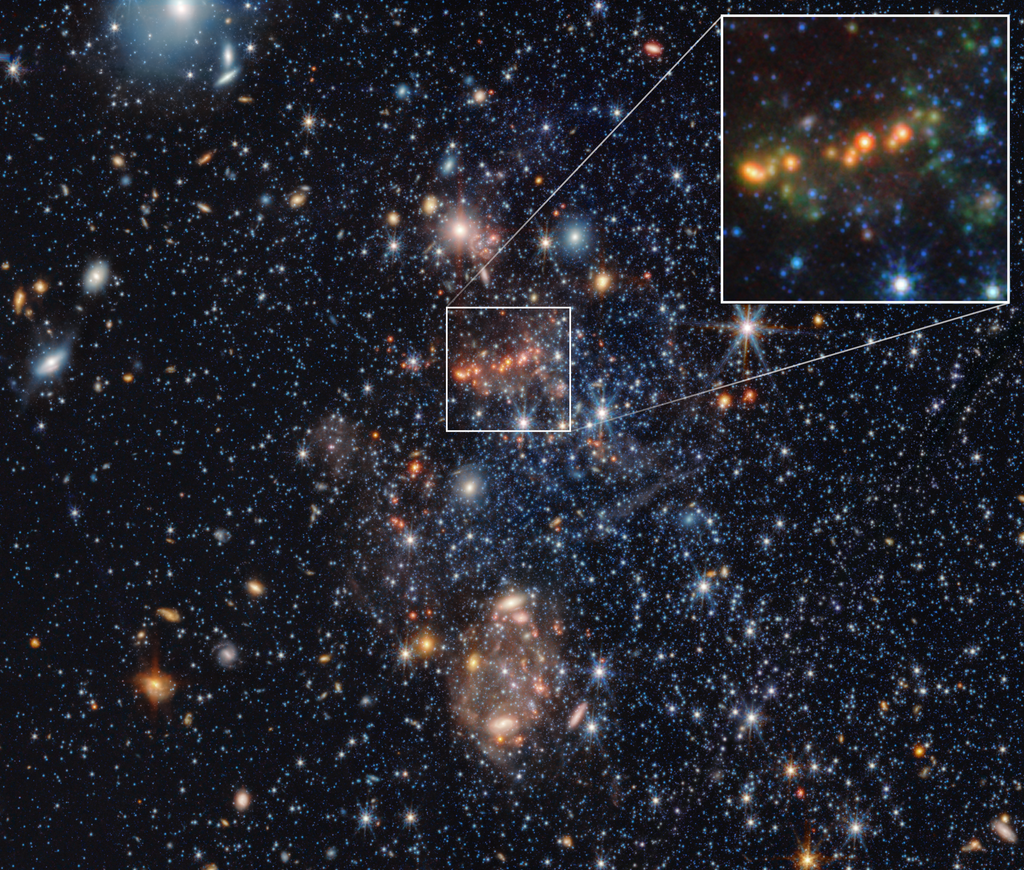1 min read
Computer Simulation – Disruption of Beta Pictoris Disk
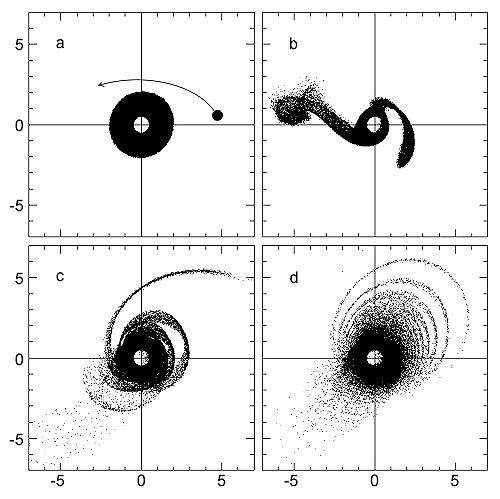
These four images are from a computer simulation of a star flying by and disrupting a circumstellar disk of dust around the star Beta Pictoris. Frame (a) shows the encounter setup, where a small M-class star swings within 700 astronomical units (1 AU is the distance between Earth and the Sun) of Beta Pictoris, an A-class star. The circumstellar disk, seen as a black donut in this overhead view, has a 500 AU radius. In (b) the gravitational tug of the intruder star pulls the dust disk into two tidal tails stretching far beyond the disk's initial radius. Like spaghetti wrapped around a fork, the tidal tails are tangled together in (c). This leads to the formation of concentric ringlets of dust (d) on one side of the star. The entire sequence takes 100,000 years. This simulation explains observed asymmetries, knots, and other unique features of the Beta Pictoris disk.
- Object NameObject NameA name or catalog number that astronomers use to identify an astronomical object.Beta Pictoris
- Release DateJanuary 15, 2000
- Science ReleaseBeta Pictoris Disk Hides Giant Elliptical Ring System
- CreditJ. Larwood (Queen Mary and Westfield College, London, UK)
Related Images & Videos
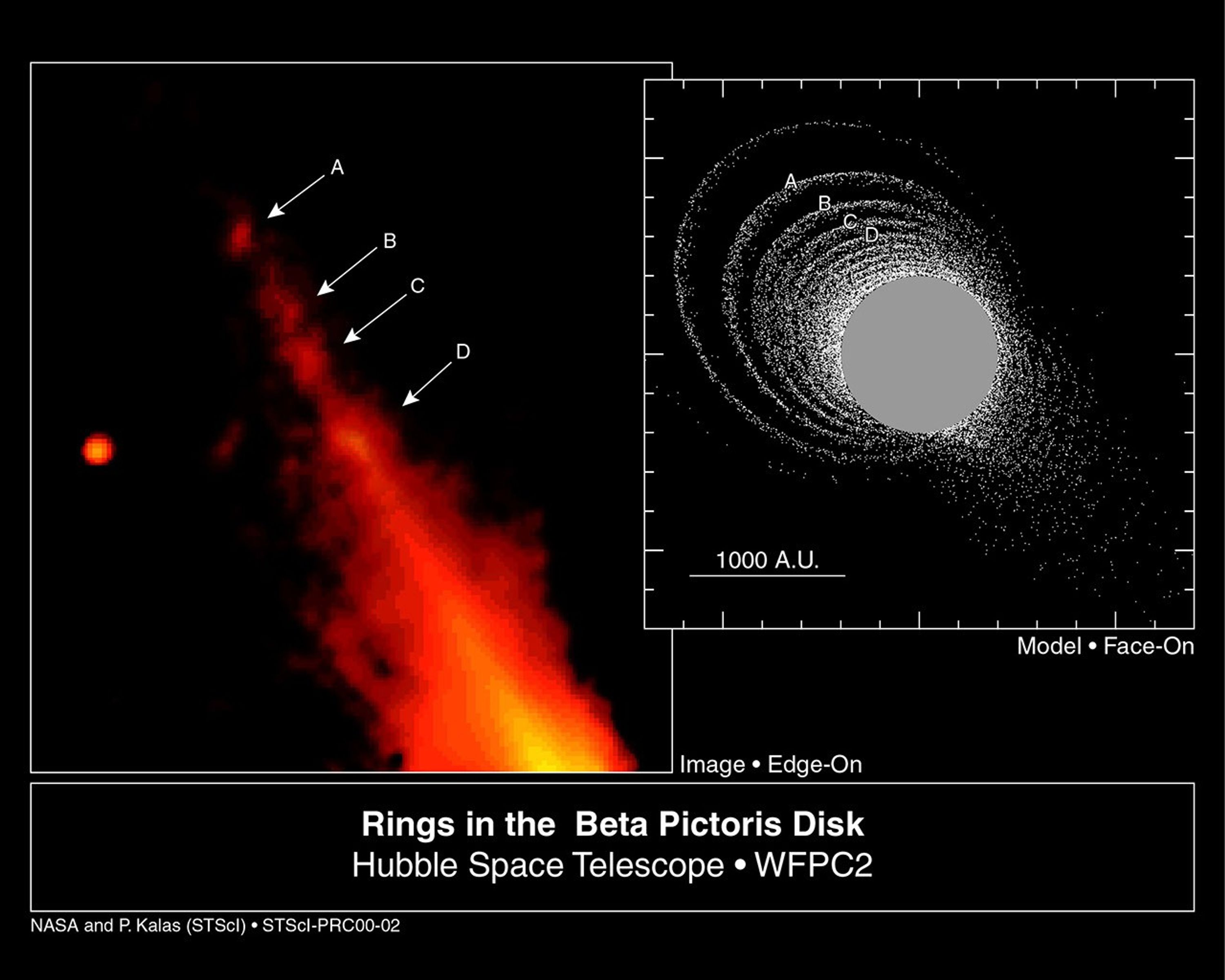
Beta Pictoris Disk Hides Giant Elliptical Ring System
[Left] – A NASA Hubble Space Telescope false-color, visible-light picture of one side of the edge-on dust disk around the star Beta Pictoris. Knots in the disk (marked A,B,C,D) are interpreted as rings of dust, seen edge-on. [Right] – A still frame from a computer simulation,...
Share
Details
Last Updated
Aug 17, 2025
Contact
Media
Claire Andreoli
NASA’s Goddard Space Flight Center
Greenbelt, Maryland
claire.andreoli@nasa.gov





